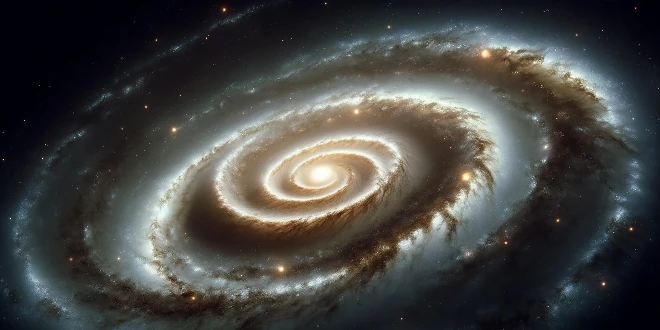A new photograph of an ancient galaxy, known as BRI 1335-0417, offers insights that could be crucial in understanding the formation and origins of galaxies like the Milky Way. This 12 billion-year-old spiral galaxy, captured by the advanced ALMA telescope (Atacama Large Millimeter/submillimeter Array), is recognized as the furthest spiral galaxy observed by astronomers, according to lead author Dr. Takafumi Tsukui.
Dr. Tsukui explained that the primary goal of capturing this galaxy was to study the movement of gas within it, as gas plays a vital role in star formation. However, to the team’s surprise, they not only observed the motion of the gas but also detected seismic wave activity in BRI 1335-0417. This discovery marks the first instance of seismic waves being identified in a galaxy.
The photo of BRI 1335-0417 revealed fascinating details about its disk, which is a flattened collection of rotating stars, gas, and dust. The motion in the galaxy’s disk resembled ripples on a pond after a stone is thrown, indicating a possible external influence on the galaxy’s formation.
Dr. Tsukui speculated that the galaxy’s oscillating disk movement might result from new gas entering the galaxy or interactions with smaller galaxies. Both scenarios could provide fresh material for star formation.
Additionally, the study uncovered a bar-like structure within the galaxy’s disk, known as a galactic bar. These structures can disrupt gas flow and channel it towards the galaxy’s center. The bar found in BRI 1335-0417 is the most distant of its kind ever discovered. Dr. Tsukui concluded that these findings collectively demonstrate the dynamic growth of a young galaxy.


